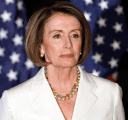Education
Mark Carney’s Election Win: What U.S. Investors Should Really Focus On

When news broke that Mark Carney had secured the win in Canada's 2025 federal election, market watchers barely blinked. The Toronto Stock Exchange slipped a modest 0.02%, and investors quickly pivoted their attention back to something much bigger on the radar: the escalating U.S.-China-Canada trade war.
For American investors, Carney’s victory offers some clues about cross-border market stability, but it’s really the widening global trade tensions that deserve a much closer look.
Here’s why, and what it means for your investment strategy.
A Political Win, But Not a Market Shake-Up
Mark Carney, a former Goldman Sachs executive, Bank of Canada and Bank of England governor, and vice-chairman of Brookfield Asset Management, brings a seasoned hand to the Prime Minister's office. With years of steering economies through storms like the 2008 global financial crisis and Brexit, Carney’s leadership is seen as competent and crisis-tested.
However, he didn’t win an outright majority, meaning he’ll need to govern through coalitions. For investors, that’s usually not a bad thing: slower-moving policy changes reduce the chances of sudden economic shocks. Think of it like driving a sports car—but with a governor on the engine to keep it from going off the rails.
Yet, no matter how stable Carney may be domestically, he's stepping into an economy already under fire from outside forces.
The Real Issue: The Trade War is Heating Up

President Trump’s tariffs are throwing cold water over Canada’s economic prospects, and by extension, creating ripple effects for U.S. investors too.
Here's the quick rundown:
25% tariffs on Canadian goods, steel, aluminum, autos, and even energy.
Canada has responded with $60 billion in counter-tariffs.
Volatility in stock markets has surged to levels not seen in years.
Carney hasn’t been shy about his stance. In his victory speech, he accused Trump of trying to "divide and weaken" Canada and promised a robust response, including:
A $2 billion strategic response fund to protect Canadian auto manufacturing.
$5 billion toward diversifying Canada’s international trade partnerships.
Speeding up energy project approvals and supporting critical minerals development.
Direct financial relief for affected workers.
This type of aggressive positioning suggests U.S.-Canada trade tensions could linger—and that matters a lot if you’re investing across borders.
Sectors to Watch Closely
If you want to stay ahead of the curve, it’s worth focusing less on the election headlines and more on these practical investing angles:
Auto and Manufacturing Supply Chains
Trump's move to soften some auto tariffs is a near-term relief, but tensions aren’t over. Both Canadian and American auto sectors are tightly intertwined. U.S. automakers sourcing parts from Canada could still see cost pressures—and earnings volatility—in the months ahead.
If you're investing in auto-related stocks, keep a close watch on how supply chains adapt and whether companies hedge their risks properly.
Energy Markets
Oil and gas markets took a hit post-election as broader worries about a global slowdown dampened demand expectations. If you have exposure to Canadian energy stocks—or U.S. energy firms heavily tied to Canadian operations—expect continued turbulence.
The bonus for Carney's energy sector plans could be a positive long-term story, but it won’t shield energy investors from the current volatility cycle.
Critical Minerals and Clean Energy
Carney’s commitment to invest in critical minerals and clean energy sectors presents a unique opportunity. These sectors are less directly impacted by tariffs and are aligned with global macro trends toward sustainability.
For U.S. investors who believe in the long game, looking into ETFs or stocks tied to North American critical minerals and clean energy supply chains could be a savvy move.
A Currency Wild Card: CAD vs USD
Another factor often overlooked is currency movement. With Carney likely to push for fewer interest rate cuts (relative to what might have happened under a different government), the Canadian dollar could stay relatively stronger against the U.S. dollar.
For investors, that affects everything from the real returns on Canadian assets to the profitability of U.S. companies that export northward.
Currency hedging strategies may make more sense now, particularly if you’re heavily weighted in North American equities.
Final Thoughts: Focus on the Bigger Picture
Mark Carney’s win isn’t a seismic event for the markets. Stability is good news. But the expanding trade war with Trump’s administration poses real risks for supply chains, inflation, corporate margins, and ultimately, equity valuations on both sides of the border.
The best move right now isn’t to overreact to political theater. Instead, sharpen your focus on sectors that are exposed to tariffs, be mindful of currency shifts, and position your portfolio for resilience—not just for the next headline, but for the real structural shifts happening underneath it.
The information presented is for educational purposes only and not an offer or solicitation for any specific investments. Investments involve risk and are not guaranteed. Consult with a financial adviser before making any investment decisions. Past performance does not guarantee future results.
Automate any portfolio using data-driven strategies made by top creators & professional investors. Turn any investment idea into an automated, testable, and sharable strategy.





